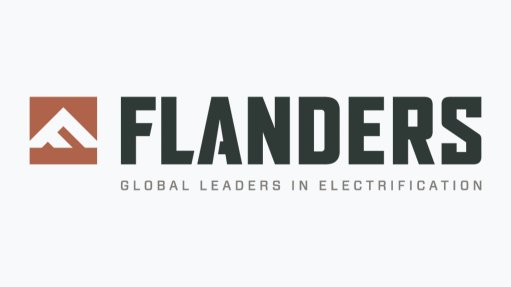Of oil refineries, nuclear plants and the planning fallacy
The great Mthombo oil refinery project and the proposed 9.6 GW nuclear fleet are still on the cards. Both not only highlight the need for vast capital investments, but also promise jobs, energy security, community upliftment, localisation and cost savings.
There is the usual amplification of rhetoric to instil optimism in the public mood that something grand will be on the horizon if we just rally behind the cause. Others may call such grandstanding a public relations war for the hearts and minds of the people.
Inevitably, decisions on these projects, if they are still to be taken, will be based on optimistic projections but the implications for the fiscus could be immense. Privateers will benefit and the public will pay and carry the burden for a long time to come if the decision is found to be wanting.
There is nothing new in what is being proposed and lobbied for by special interests for both these projects. Project Mthombo is being mooted by PetroSA and it looks likely the figure of 400 000 bbl/d is going to be tone downed to a less ambitious production rate.
For the nuclear programme, the first fleet is promised to begin in 2020, but sceptics say such a start date is not feasible, given all the approvals that will be needed.
Both projects require long planning horizons, covering a string of regulatory hurdles and huge capital investments. The sizes of the projects will not only stretch our budgets but also sap the energy of the bureaucracy.
Decision-makers inhabit information asymmetry, the challenge of managing insistent lobbyists with good political connections who are seasoned veterans at targeting a ‘hit list’ of decision-makers and bureaucrats. And the State will be faced with a long-term noose around its neck, having the uncertainty of determining how costs and benefits will unfold.
We are no better guided by intuition, and experience from elsewhere does not come in handy because, if you have not done something before, you simply do not know how to do it and what seems to be a good guess may turn out to be a bad one. You are always at your wits’ end as pressure continues to build from loud chagrin of the insider view.
So, how does one challenge the insider view forecast? Daniel Kahneman, the Nobel Laureate, provides a useful chapter in his book, Thinking Fast and Slow, of how to grapple with this planning challenge or what he calls the ‘planning fallacy’.
Kahneman also draws on the scholarship of Danish planning theorist Bent Flyvbjerg and others. Flyvbjerg is famous for showing how technical, financial and bureaucratic power can define what counts as knowledge and rationality in the case study of city planning in Aalborg, Denmark.
Kahneman offers a useful summary of alternative methods of assessment that can be applied to deal with the insider view, information asymmetries and cognitive bias. To overcome these, decision-makers should widen the frame of reference in what Kahneman calls “bringing in the outsider’s view”. This has to be a rigorous exercise because the outsider’s view can also suffer the problem of self-selection to fit a particular framing.
Kahneman notes that the optimism of decision-makers and planners is not the only cause of cost overruns, but that developers themselves make most of their profit from cost overruns. Forecasts, therefore, tend to be overtly optimistic about costs to lock the plans into motion, knowing full well that reversing the decision is more unlikely and the inevitable cost overruns will prevail.
Kahneman goes on to note: “. . . the greatest responsibility for avoiding the planning fallacy lies with the decision-makers . . . if they do not recognise the need for an outside view, they commit the planning fallacy.”
The problem can be overcome if the framing of the forecast predictions is set differently through improvements in the method of assess- ment or what is also technically called ‘reference class forecasting’ – a method pioneered by Flyvbjerg for transport projects around the world.
How does reference class forecasting work? You need a large database of plans and outcomes of a similar class of hundreds of projects around the world that provide statistical information on cost overruns, time taken and the performance quality of the different types of projects. On the basis of this, a baseline prediction can be done and adjusted, based on the specific information – if there is more granularity – if you suspect that projections from the planners have been too optimistic.
Planners can set aside a budget reserve but, as Flyvbjerg found out, they are to contractors what red meat is to lions – if it is there, it will be devoured.
Standard technologies tend to fall on safer ground because there would be enough applications to draw from but new technologies are far harder to predict. New technologies can be judged by pilots, proxies or the complexity of the technology. The more complex a technology – like a nuclear plant – is, the more likely there are going to be cost overruns than savings.
The lesson in all this is that optimistic projections should arouse suspicion. Plans have a myriad ways of failing, especially if they relate to greenfield projects. Cost overruns matter, especially if we are committing ourselves to many different types of infrastructure projects within a very narrow time horizon.
Economic planning is governed by two major forces: the rational and irrational (what Keynes called the ‘animal spirit’). Cognitive bias in planning always needs checks and balances.
Article Enquiry
Email Article
Save Article
Feedback
To advertise email advertising@creamermedia.co.za or click here
Comments
Press Office
Announcements
What's On
Subscribe to improve your user experience...
Option 1 (equivalent of R125 a month):
Receive a weekly copy of Creamer Media's Engineering News & Mining Weekly magazine
(print copy for those in South Africa and e-magazine for those outside of South Africa)
Receive daily email newsletters
Access to full search results
Access archive of magazine back copies
Access to Projects in Progress
Access to ONE Research Report of your choice in PDF format
Option 2 (equivalent of R375 a month):
All benefits from Option 1
PLUS
Access to Creamer Media's Research Channel Africa for ALL Research Reports, in PDF format, on various industrial and mining sectors
including Electricity; Water; Energy Transition; Hydrogen; Roads, Rail and Ports; Coal; Gold; Platinum; Battery Metals; etc.
Already a subscriber?
Forgotten your password?
Receive weekly copy of Creamer Media's Engineering News & Mining Weekly magazine (print copy for those in South Africa and e-magazine for those outside of South Africa)
➕
Recieve daily email newsletters
➕
Access to full search results
➕
Access archive of magazine back copies
➕
Access to Projects in Progress
➕
Access to ONE Research Report of your choice in PDF format
RESEARCH CHANNEL AFRICA
R4500 (equivalent of R375 a month)
SUBSCRIBEAll benefits from Option 1
➕
Access to Creamer Media's Research Channel Africa for ALL Research Reports on various industrial and mining sectors, in PDF format, including on:
Electricity
➕
Water
➕
Energy Transition
➕
Hydrogen
➕
Roads, Rail and Ports
➕
Coal
➕
Gold
➕
Platinum
➕
Battery Metals
➕
etc.
Receive all benefits from Option 1 or Option 2 delivered to numerous people at your company
➕
Multiple User names and Passwords for simultaneous log-ins
➕
Intranet integration access to all in your organisation
















